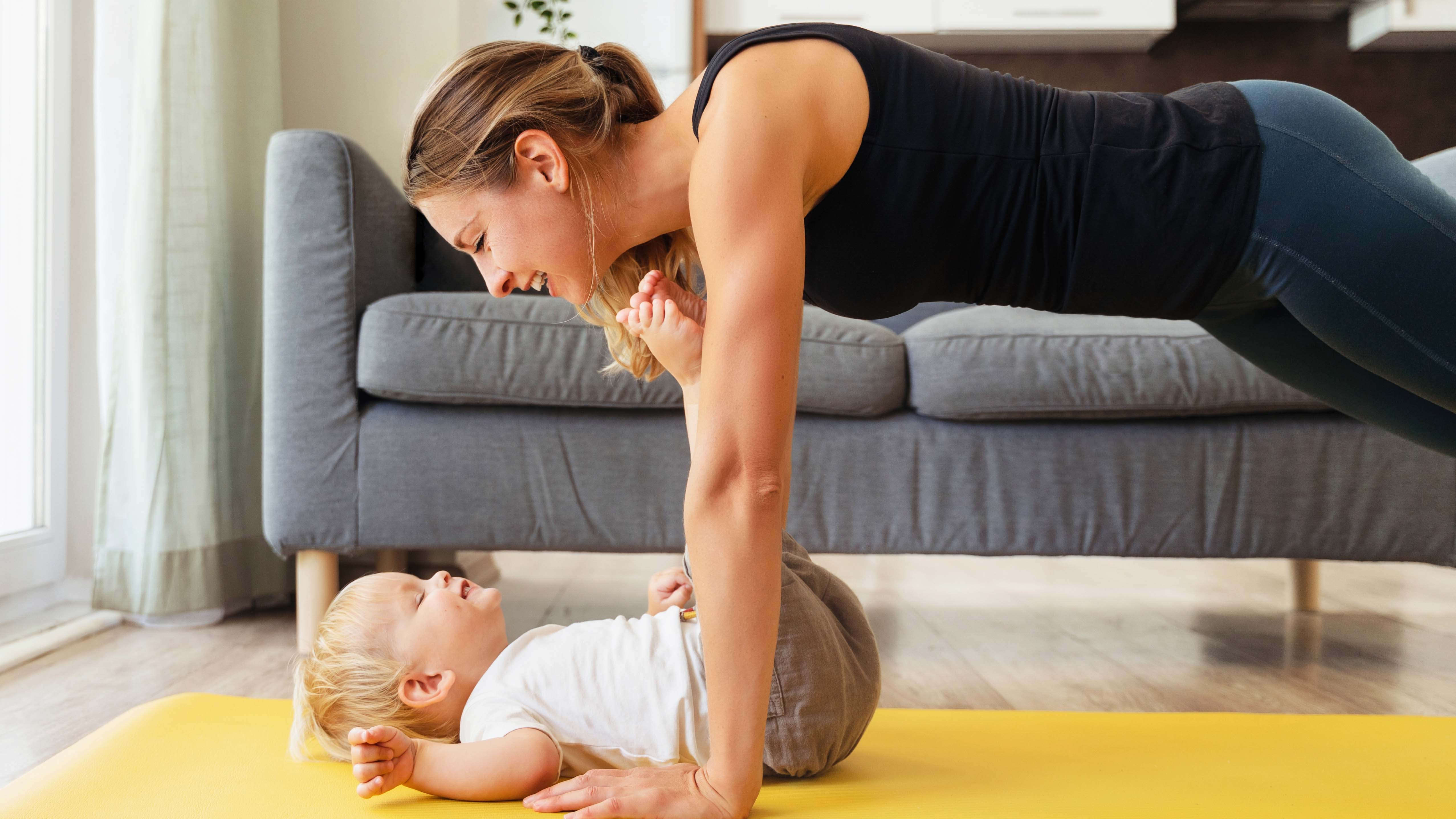I asked ChatGPT to program a postpartum workout for me — and I was shocked at the results

I had a baby last month and was recently given the all-clear to resume my workouts. As much as I want to fire up the treadmill and pick up some dumbbells, I know that returning to exercise postpartum is a gradual process. Taking things slow and focusing on the basics is a must.
Between caring for a newborn and working with my personal training clients again, I don’t have much time to think about my own postpartum workout program. I turned to ChatGPT for some guidance, expecting to get a rudimentary outline that I’d have to fill in with my own knowledge. What the bot actually returned to me was quite surprising.
Here’s what I found after asking ChatGPT to program a postpartum workout.
What should a postpartum workout look like?
Your first workouts after childbirth should center around rebuilding your deep core muscles, namely your TVA (transverse abdominis) and pelvic floor. These muscles can become weak and deconditioned during pregnancy, and starting with something as simple as deep breathing can help reestablish mind-muscle connections and deep core strength.
Diastasis recti, a condition where your rectus abdominis separates in order to accommodate your growing baby, is very common. This separation can persist postpartum, causing a gap or bulge in the abdomen. Certain exercises can make this separation worse and should be avoided.
I asked ChatGPT to program a postpartum workout — here’s what happened
After I typed in the prompt and hit enter, I watched as my computer screen filled with lots of text. Here’s what I thought of my ChatGPT postpartum workout:

The program was incredibly thorough
Based on my prompt, I thought I’d get four or five basic exercise suggestions. Boy, was I wrong.
Get instant access to breaking news, the hottest reviews, great deals and helpful tips.
The program began with a list of goals: “rebuild core and pelvic strength,” “improve posture and mobility,” and “gently restore total-body fitness.” What followed was a four-week plan with duration guidelines, equipment lists, and a workout routine broken down into a warm-up, core and pelvic floor activation exercises, full-body strength movements, and a cool down. Sets and rep ranges were also listed.
Even more surprising were the closing tips for success: “listen to your body,” “hydrate and rest,” and “check for diastasis recti.” ChatGPT then asked if I’d be interested in a second workout as part of a progressive 8-week plan (I said yes, of course).
This was far more thorough than I ever imagined it would be, and I really appreciated the goals and tips that were included. These are small details that can make a big difference to someone who’s getting started.
It took common postpartum issues into consideration
Knowing that AI has its limitations, I expected to see some “errors” in the workout.
To my surprise, there were no sit-ups, crunches, box jumps, or running in place (all of which can make common postpartum issues worse). Everything in the program was geared towards addressing 2 major post-natal conditions: diastasis recti and weak pelvic floor muscles. The TVA activation, Kegels or Pelvic floor lifts, heel slides, and glute bridges included in the first 4 weeks’ routine are exercises that I’ve assigned to my own clients. Even the warm-up and cool-down focused on diaphragmatic breathing, which is an incredibly important tool in rebuilding deep core strength.
It was an excellent postpartum routine…if you know what you’re doing
Since I’m a personal trainer with experience in post-natal exercise, I decided to skip ahead and do the second workout as well. Both programs were chock-full of fundamental exercises that strengthen key areas and mobilize tight joints and muscle groups.
While I was impressed with this 8-week program, I was able to get the most out of it because of my background in fitness. ChatGPT didn’t provide any real guidance on how to do the exercises, and most of the instructions were very abridged if not completely absent. Seeing a birddog explained as “opposite arm/leg reach” made sense to me, but that could be incredibly vague for a beginner. Beginners would most likely need to find visual examples of each exercise, which could take a considerable amount of time (and I’ve never met a new parent who had time to spare).
It didn’t replace working with a professional
I enjoyed going through the ChatGPT workout and will most likely revisit it as I continue to recover.
I’m also meeting with a pelvic floor therapist, and that’s been crucial for addressing my specific postpartum strength needs. There are exercises I’m doing in therapy that have really helped me heal, paired with some hands-on stretching and scar tissue break-up — things that only a real, live human can do.
The ChatGPT-generated program is a great supplement to what I’m doing in therapy, but there’s no substitute for professional, personalized care.
More from Tom's Guide
- This workout app lets you use your baby as a dumbbell — 3 things I learned when I tried it
- Forget planks — 6 Pilates exercises to help you rebuild your core postpartum
- 5 things a fertility expert wants you to know about exercise if you’re trying to get pregnant

Jennifer Rizzuto is a freelance writer and certified personal trainer based in Long Island, NY. She covers various fitness-related topics and reviews for Tom's Guide. She also writes sketch comedy and short films, and performs frequently as an actor, singer, and improviser. When she's not writing, working out, or performing, you'll find her trying to convince her husband to get a dog.
You must confirm your public display name before commenting
Please logout and then login again, you will then be prompted to enter your display name.
